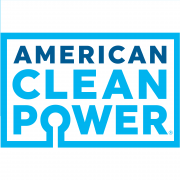Solar and The Future of Farmland
By David Murray
In the 1940s, my great-grandfather purchased a small farm in the Hudson Valley of New York. He raised chickens and grew tomatoes, strawberries, and other crops until he passed away. My extended family treasures this farm, but with every passing year, maintaining it becomes less economic. The temptation to sell the property gets stronger.
Thousands of small farmers across America share my family’s story. The agriculture industry is increasingly consolidated, moving to a large, corporate business model. Farming technology has advanced rapidly, leading to crop prices are driven low. Small, independent farmers are often pushed out of the market. Meanwhile, real estate development in rural areas and suburban sprawl creates a pull: from 2001 to 2016, the U.S. converted 11 million acres of farmland to non-agricultural uses, with low density residential land use as the primary driver.
On one hand, the trend is unsurprising: as we become more efficient at growing food, we require less land – and fewer people – – to farm. On the other hand, small farmers play an important role in our food system, and families like mine should be able to pass a successful operation down to the next generation. For many families, solar energy provides that opportunity.
Leasing land to a solar developer provides stable, consistent income, helping some farmers avoid having to sell the land, which often gets converted to housing, commercial real estate, or other uses. In this manner, solar energy protects against what conservation organizations fear the most: low-density, suburban sprawl.
Solar energy development can also preserve the land: after approximately 30 years, the next generation can convert the property back to agricultural use. Finally, many farmers are already accustomed to supporting America’s energy needs: over 30 million acres of farmland are used to grow corn for ethanol.
Of course, farmers need to think long term: what are the impacts to the land from solar development? One benefit is nutrient runoff: solar facilities require less fertilizer than most crops; thus, nutrient runoff from solar facilities is typically less than the pre-existing agricultural use. Native grasses and legumes also mitigate erosion and improve water quality by intercepting sediment and nutrients. Solar development also cuts down on pesticide and insecticide use. Herbicide may be used during the site preparation process, but more sparingly once the facility is in operation. For arid regions, solar reduces water use – leaving an increasingly valuable resource to neighboring farming operations.
However, for families like mine that want continue using our farm to grow food and feed, agrivoltaics provides an exciting opportunity. This is why the American Clean Power Association is happy to work with the National Center for Appropriate Technology’s AgriSolar Clearinghouse to make agrivoltaics an increasingly financially feasible option for farmers.
Solar grazing is a bright spot. While letting sheep into an active power plant comes with a unique set of challenges, in certain cases it can be cheaper than a traditional landscaping crew. Data from the American Solar Grazing Association shows smaller projects are more likely to use solar grazing, but the association recently noted that a 200-megawatt (MW) solar project is slated to incorporate sheep into its vegetative management plan. For sites where solar grazing works, it can be an excellent win-win-win.
In the meantime, the industry is working to bring down costs of other forms of agrivoltaics, such as crop production underneath panels. A key challenge is raising the height of solar panels to accommodate farming. Unfortunately, raising solar panels significantly increases costs, as the piles need to be taller and driven further into the ground. Expensive machinery – such as a scissor lift – is needed to install piles deep enough to ensure they are secured properly to resist heavy winds. These lifts are not designed for use on solar sites. Furthermore, this process requires more labor to successfully deploy the equipment. This is an example of a major challenge that ACP is excited to work with NCAT on to make agrivoltaics more widespread.
We are aiming for a future where many types of agrivoltaics can scale, while ensuring that solar energy remains one of the cheapest forms of new energy generation. Thus, ACP will continue engaging with NCAT to identify ways to bring down the costs of agrivoltaic projects and continue to foster partnerships between the solar industry and agriculture sector.
David Murray is the Director of Solar Policy at the American Clean Power Association.



